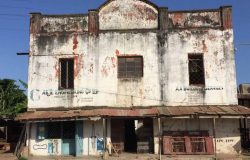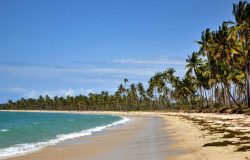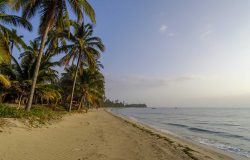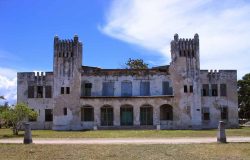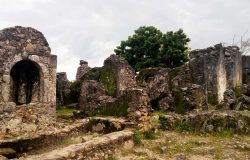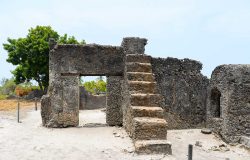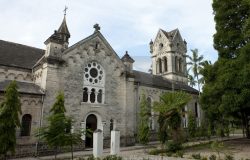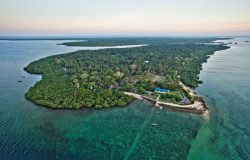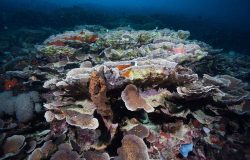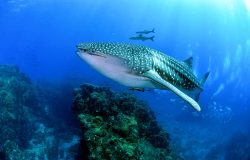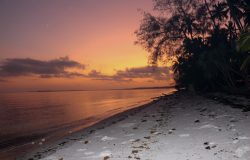If you are looking for a great beach holiday, to relax and unwind after a safari on the Tanzania mainland, Zanzibar might be the ideal island for you.
Zanzibar is a semi-autonomous part of Tanzania in East Africa. It is composed of the Zanzibar Archipelago in the Indian Ocean, 25–50 kilometres (16–31 mi) off the coast of the mainland, and consists of many small islands and two large ones: Unguja (the main island, referred to informally as Zanzibar) and Pemba. The capital is Zanzibar City, located on the island of Unguja. Its historic centre is Stone Town, which is a World Heritage Site.
Zanzibar’s main industries are spices, raffia, and tourism. In particular, the islands produce cloves, nutmeg, cinnamon, and black pepper. For this reason, the islands, together with Tanzania’s Mafia Island, are sometimes called the Spice Islands (a term also associated with the Maluku Islands in Indonesia). Zanzibar is the home of the endemic Zanzibar Red Colobus Monkey, the Zanzibar Servaline Genet, and the (possibly extinct) Zanzibar Leopard.
History
Zanzibar has lured traders, adventurers, plunderers and explorers to its shores for centuries. The Assyrians, Sumerians, Egyptians, Phoenicians, Indians, Chinese, Persians, Portuguese, Omani Arabs, Dutch and English have all been here at one time or another. Some, particularly the Shirazi Persians and Omani Arabs, stayed to settle and rule. With this influence, Zanzibar has become predominantly Islamic (97%) – the remaining 3% is made up of Christians, Hindus and Sikhs. The earliest visitors to Zanzibar were Arab traders who are said to have arrived in the 8th century. The earliest building that remains on Zanzibar is the mosque at Kizimkazi, which dates from 1107, and is a present-day tourist attraction.
For centuries the Arabs sailed with the monsoon winds from Oman to trade primarily in ivory, slaves and spices. The two main islands, Unguja (normally known as Zanzibar Island) and Pemba, provided an ideal base for the Omani Arabs, being relatively small, and therefore fairly easy to defend. Indeed, in 1832, Sultan Seyyid Said, of the Busaid dynasty that had emerged in Oman, moved his Sultanate from Muscat to Zanzibar, perhaps making it easier to protect, where he and his descendants ruled for over 130 years. Most of the wealth lay in the hands of the Arab community, who were the main landowners at that time.
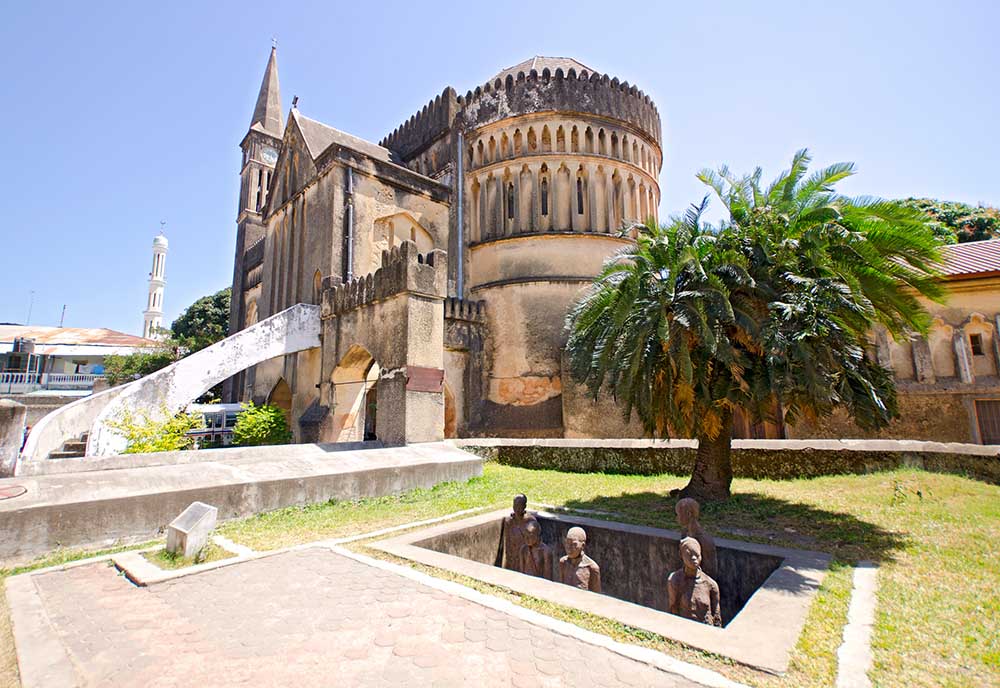

Zanzibar Stone Town
Widespread intermarriage between Shirazis and Africans gave rise to a coastal community with distinctive features, and a language derived in part from Arabic, which became known as Swahili. The name Swahili comes from the Arab word sawahil, which means ‘coast’.
The Zanzibar descendants of this group were not greatly involved in the lucrative slave, spice and ivory trades. Instead, they immersed themselves mainly in agriculture and fishing. Those Shirazi that did not intermarry retained their identity as a separate group. Indian traders arrived in connection with the spice and ivory trade, and quickly settled as shopkeepers, traders, skilled artisans and professionals. The British became involved in missionary and trading activities in East Africa, and attempting to suppress the slave trade centred in Zanzibar.
Goods from Britain docked here before they moved on to other parts of Africa. No longer very prosperous in the fiscal sense, the island has a wealth of historical monuments to visit which commemorate the African, British and particularly Arab influences- sultan’s palaces, cathedrals, mosques, fortresses and old colonial houses. “Spice Tours” are the ideal way to see the island’s historic sites and spice plantations. There is also a sanctuary for the rare Zanzibar duiker and the red colobus monkey in the protected Jozani Forest, just twenty-five kilometers from the town.
Zanzibar-market-tour
When in villages or in Stone Town wearing beach wear would (and does) cause offence. Try to wear loose-fitting, non-transparent clothing when in public. Zanzibari people are generally very warm, open and hospitable, and your respect for permission before taking photographs or filming local people is appreciated. Do not take photos or film at sensitive government sites including the State House, seaport, airport or military sites. If uncertain, it is always better to ask.
Public consumption of alcohol is not permissible, except in hotels and tourist areas, bars and some restaurants, where it is no problem. Public displays of affection such as kissing are not customary and generally considered offensive, unless behind closed doors. Local customs should respected. Mosques are sacred places an there is generally no entry to non-Muslims, unless accompanied by a person of the faith who can show you around except during the times for congregational prayer, which are five times daily.
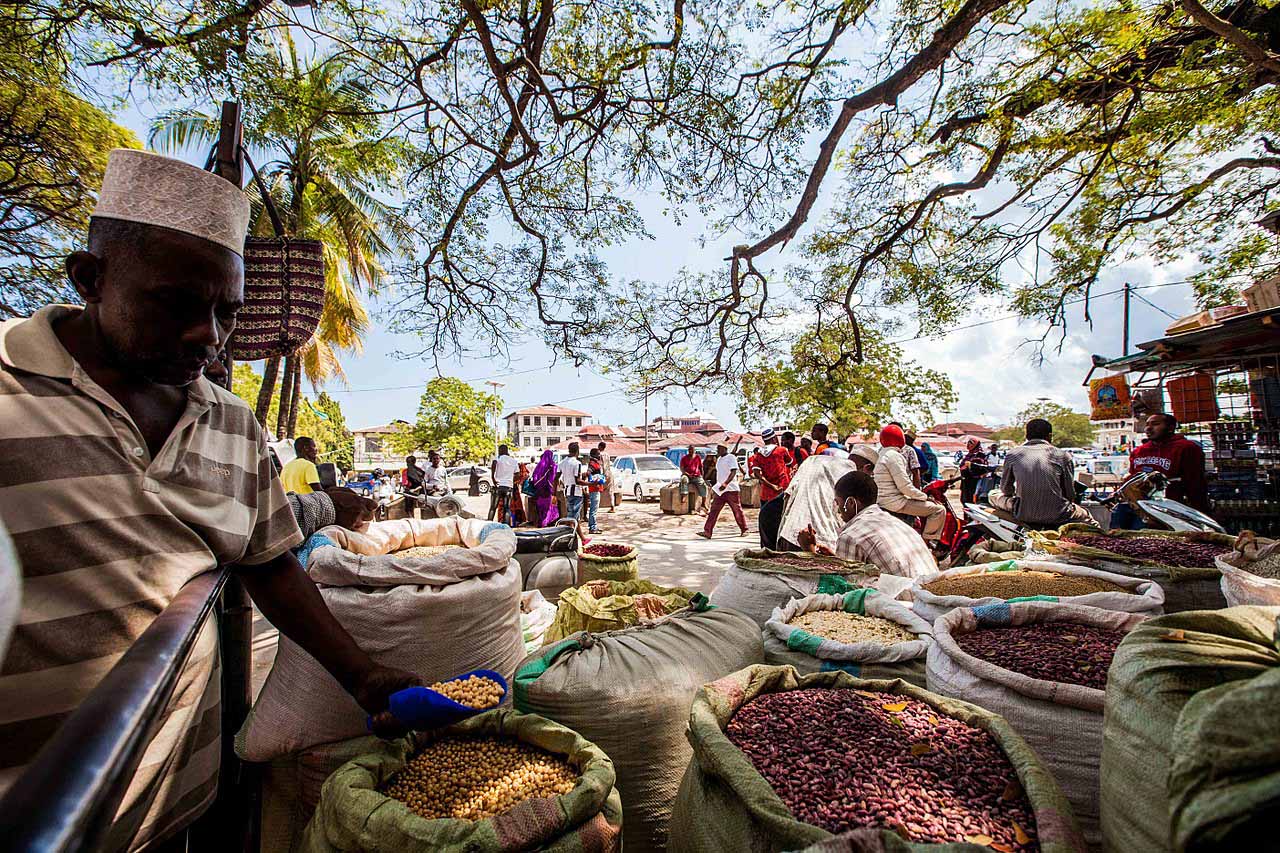
Language
The main language is Kiswahili. Even if you only use a few words whilst you are in Zanzibar you will make many friends. English is widely spoken and many people also speak Arabic. Other European languages such as French and Italian are known by some local people, especially around the tourist areas.
Population
The combined population of Zanzibar including Pemba is approx 1,000,000.
Religion
About 95% of the local population is Muslim. The remainder are Hindu or Christian and some with traditional beliefs. As well as many many mosques, Stone Town hosts an Anglican and a Catholic Cathedral and a Hindu Temple.
Time difference
3 hours ahead of GMT.
Electricity
Power system is 220-240 volts ac, plugs 13amp usually square pin.
Cultural aspects
The population of Zanzibar is predominantly Muslim with a rich Swahili culture. Because of religious and cultural traditions dress code is important, and men and women should dress appropriately when away from the beach, ie covering shoulders and legs too below the knees. Beachwear on the beach is fine, although nude or topless bathing is not tolerated.
Climate
Zanzibar experiences ideal holiday weather for most of the year, with the exception of April and May, which are seasonally subject to the long rains. Short rains can occur in November but are characterized by short showers, which do not last long.
The heat of summer is seasonally often calmed by windy conditions, resulting in pleasant sea breezes, particularly on the North and East coast. Being near the equator, the islands are warm all year round but officially summer and winter peak in December and June respectively. Zanzibar is blessed with an average of 7-8 hours of sunshine daily.
Seasons
SUMMER – November to May Hot, some humidity with some rains in November, May and June.
WINTER – June to October Warm with rains in June, otherwise sunny.
BEST – December to March and July to October
Money matters
The unit of local currency is the Tanzania Shilling (TSh). American dollars in cash or travellers cheques are acceptable in many places around town. Credit cards are still almost unknown in Zanzibar, and if you do manage to find a place to use them there will usually be a surcharge of at least 10%. Bartering about prices is common in Zanzibar marketplaces. Hotel, restaurant and tour operator prices are generally non-negotiable.
Shopping
A variety of locally produced crafts can be found in the shops and bazaars of StoneTown. Buying such goods benefits the local community so we encourage you to look out for such goodies.
Passports & Visas
All visitors must have a valid passport and visa to enter Tanzania. Visa fees vary according to the country you originate from. Visas can be obtained from Tanzania Diplomatic Representatives abroad.
Vaccination certificate
Visitors traveling to Tanzania don’t need anymore a valid international certificate of vaccination against Yellow Fever and Cholera!
Anti-malaria medication is recommended when traveling within East Africa. Anti-malaria tablets are recommended to be taken a few days prior to arrival, during your stay and for a short period after returning home.
Zanzibar Itineraries
Pangani
Pangani town is an Old Port as well as great diversity of tropical marine dwellers. This town is located at the point where the massive Pangani River empties itself into the Indian Ocean. Pangani River collects all its water from Mt Kilimanjaro and Meru and it passes through the northern side of the town, separating the old buildings and the present-day market from the farms and small houses on the southern side. The river itself requires a ferry to cross, its dark brown waters filled heavily with alluvial silt as it meanders slowly into the ocean. On either side of the little town, coconut palms and sisal plantations undulate towards the horizon. Here you will enjoy coastline with clean beaches where endangered Green Turtles breeds, coral reefs, and historic sites.
Once a center of Swahili trade with the African mainland; the town of Pangani is now a sleepy backwater with little memories of days of splendor. The old German administrative boma still stands behind a colonnade of tall shade trees and the former prison, painted a fading ochre red, looks over the river’s lazy waters. Old houses along the main road offer lived-in examples of colonial and traditional Swahili architecture, the buildings slowly crumbling against the monsoon winds. Visitors passing through the area would do well to explore what remains of the old town on foot. Even a short walk rewards visitors with a glimpse of quiet life in the old trading towns along the Swahili Coast.
Pangani Offers the Following Activities;
- Pangani River cruising
- Historical town tour, explore Historic buildings of Pangani town, slave market, old port and slave routes
- A boat trip to Maziwe Marine Park Island for swimming, sun-bathing, snorkeling and watching dolphins
Village tours which gives you an opportunity to participate in various activities with the family members, visit local’s farms with coconut, various types of fruits and enjoy fresh fruits and coconut juice while rolling on crisscrossing the dominating coconut trees. Finally a welcome to Coast people’s home and stay with a family getting an insight of the Swahili culture. - Cycling tours around the town to the German fort, then proceed to Mwera, sisal plantations Kikokwe the first place where sisal was introduced to Eastern Africa by Dr. Richard Hindrof and adjacent villages. Other cycling tours can take you to Mkoma to see the Pemba channel, Mwanaunguja corals and bombarded German war ship to Ushongo beaches.
- Evening tour within and around Pangani town. Get an insight of local entertainments available in the area
- An opportunity to explore the life of Endangered Green Turtles. Visits to nesting sites and get to know their breeding behavior.
Bagamoyo
Bagamoyo town a designated World Heritage Site, it is home to a number of historical features, including old German ruins, the church where Livingstone’s body was kept for some time, and traditional Zanzibar-style hand-carved wooden doors and crumbling yet beautiful architecture. The name meaning ‘Loss of the Heart’ as a result of it being a terminus for the slave caravans from the interior. At the peak of the slave trade in the mid-19th century it is estimated about 50,000 captives arrived in Bagamoyo each year carrying Ivory and other prizes to the coast where they would be traded for gold and spices forming an important part of the Omani trading empire. It is also home to the oldest church in East Africa.
Strolling through Bagamoyo’s narrow, unpaved streets takes you back to the mid-19th century, when the town was one of the most important settlements along the East African coast and the terminus of the trade caravan route linking Lake Tanganyika with the sea. Slaves, ivory, salt and copra were unloaded here before being shipped to Zanzibar Island and elsewhere, and many European explorers, including Richard Burton, Henry Morton Stanley and David Livingstone, began and ended their trips here. In 1868 French missionaries established Freedom Village at Bagamoyo as a shelter for ransomed slaves, and for the remainder of the century the town served as a way station for missionaries travelling from Zanzibar Island to the interior.
Tourist attractions include the Kaole ruins dating back to the 12th century thought to mark one of the earliest contacts of Islam with Africa; the Old Fort built in 1860 for holding slaves for shipment to Zanzibar; the first Roman Catholic Church in East Africa built around 1868 used as a base to run a camp of about 650 freed slaves; the German colonial administration headquarters, the Boma, in the first capital of German East Africa; the Mission Museum displaying history of Bagamoyo; and the Livingstone Memorial Church among others. Bagamoyo white sand beaches are considered some of the finest on the whole of the East African coast.
Bagamoyo is also a popular beach destination, only 75km from Dar es Salaam on good tarmac road.
There are several mid-range beach hotels available, taking advantage of Bagamoyo’s beautiful coastline and the warm blue waters of the Indian Ocean. Bagamoyo’s unhurried pace and fascinating history make it an agreeable day or weekend excursion from Dar es Salaam.
Bagamoyo is a quiet place to end a safari and relax by the beach. For more information on staying in Bagamoyo contact us.
Mafia Island
Mafia Island is part of Tanzania’s Mafia Archipelago, in the Indian Ocean. Although it officially forms part of mainland Tanzania and not Zanzibar, it’s near to Zanzibar and classifies as an Island in the Sun!
Large swaths of the island’s southern coastline and surrounding waters are protected by the Mafia Island Marine Park.
Within the park are many coral reefs which offers a great range of corals and fish, excellent for diving and snorkeling, home to wildlife such as whale sharks and sea turtles. The clear, protected waters offer wonderful snorkeling, sailing and swimming.
Outside the Bay unbroken reef runs the length of the island, from Tutia in the south to RasMkumbi at the northern tip. In the south the beaches includes secluded RasKisimani, just across from Bwejuu Island. Popular Utende Beach edges onto Chole Bay.
The marine park area at Mafia Island extends across some 822km2, more than 75% of it below the high water mark. The area hosts an outstanding mosaic of tropical marine habitats including coral reefs, sea grass beds, mangroves and inter-tidal flats.
In addition a remnant block of threatened lowland coastal forest survives along the eastern seaboard of the island, roughly half of it within the marine park boundary.
Two species of sea turtle use Mafia’s beaches as nesting grounds and the area has been recognized internationally as a critical site for biodiversity. Several sites of historic ruins lie within the marine park area, some dating back to the C 13th.
Mafia Island’s separation from the mainland and its freedom from industrial development have ensured that its surrounding waters are some of the least contaminated in Tanzania.
The marine park area has national importance as one of the few remaining reef complexes within Tanzania’s coastal waters in relatively intact condition.


